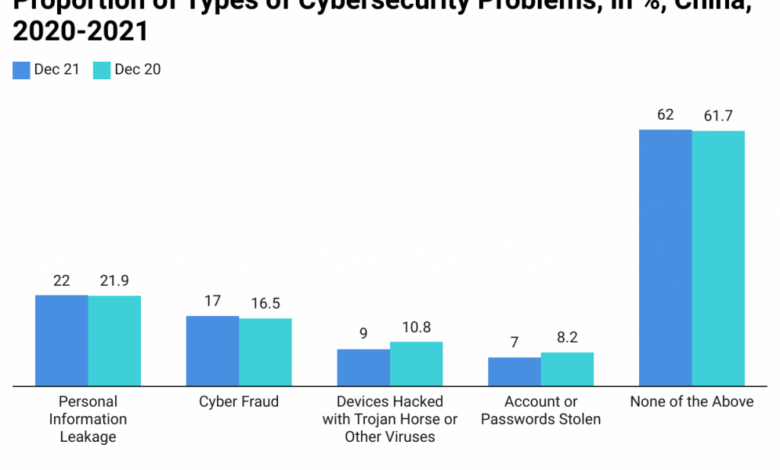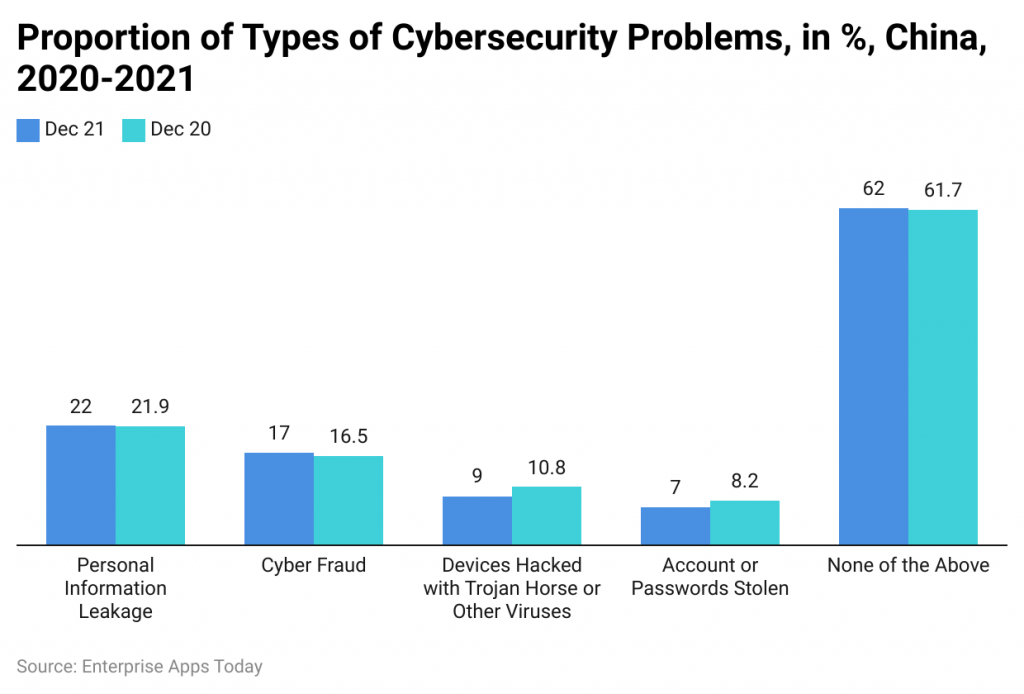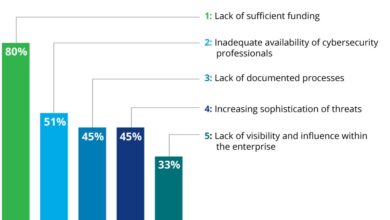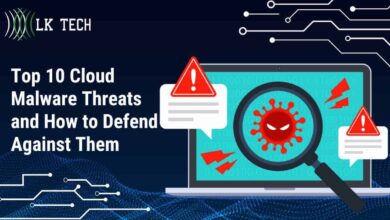
Companies in China Witness a Surge in Cyber Attacks
Companies in China witness a surge in cyber attacks – a chilling reality that’s shaking the foundations of the nation’s digital landscape. It’s not just a numbers game; we’re talking about sophisticated attacks targeting crucial sectors, leaving a trail of financial losses and reputational damage in their wake. This isn’t just about stolen data; it’s about the potential for widespread disruption and the unsettling question of who’s behind it all.
Prepare to delve into a world of digital espionage, economic warfare, and the fight for control in the shadow of the Great Firewall.
The recent escalation in cyberattacks against Chinese companies is a complex issue with far-reaching implications. We’ll explore the types of attacks, the industries most affected, and the potential motivations, from geopolitical tensions to straightforward economic espionage. We’ll examine vulnerabilities exploited by attackers, the role of state-sponsored actors, and the significant impact on the Chinese economy. Finally, we’ll offer practical recommendations for mitigation and prevention, because in this digital battlefield, preparedness is paramount.
The Rise in Cyberattacks Targeting Chinese Companies

The cybersecurity landscape in China is rapidly evolving, with a significant surge in cyberattacks targeting businesses across various sectors. This increase isn’t just a matter of rising numbers; it reflects a complex interplay of geopolitical tensions, escalating economic competition, and sophisticated espionage efforts. Understanding these trends is crucial for Chinese companies to bolster their defenses and mitigate the substantial financial and reputational risks involved.
Types of Cyberattacks and Affected Industries
Chinese companies are facing a diverse range of cyber threats. Ransomware attacks, designed to encrypt critical data and demand payment for its release, are increasingly prevalent. Phishing campaigns, using deceptive emails or websites to steal credentials, remain a persistent problem. Distributed Denial of Service (DDoS) attacks, which overwhelm systems with traffic to disrupt services, also pose a significant threat.
These attacks disproportionately affect sectors like finance, technology, and manufacturing, given their valuable data and critical infrastructure. However, no industry is immune; even smaller businesses are increasingly becoming targets.
Motivations Behind the Surge in Attacks
The rise in cyberattacks against Chinese companies is driven by a confluence of factors. Geopolitical tensions, particularly the ongoing US-China technological rivalry, create a climate of heightened cyber espionage. State-sponsored actors, as well as criminal groups, may be motivated to steal intellectual property, disrupt operations, or gain strategic advantages. Economic competition fuels attacks aimed at stealing trade secrets, disrupting supply chains, or gaining a competitive edge.
Furthermore, the increasing digitization of Chinese businesses expands the attack surface, making them more vulnerable to cybercriminals seeking financial gain.
Financial and Reputational Damage
The consequences of successful cyberattacks can be devastating for Chinese companies. Ransomware attacks can lead to significant financial losses from ransom payments, data recovery costs, and business disruption. Data breaches can result in hefty fines for non-compliance with data protection regulations and legal repercussions. Beyond the direct financial impact, reputational damage can be substantial. Loss of customer trust, damage to brand image, and decreased investor confidence can have long-term consequences.
The negative publicity associated with a data breach can severely impact a company’s profitability and future prospects.
Frequency and Severity of Cyberattacks
The following table provides a hypothetical representation of the frequency and severity of different types of cyberattacks against Chinese companies over the past year. Note that precise, publicly available data on this subject is often limited due to security and confidentiality concerns. This data is illustrative and should not be taken as definitive statistics.
| Type of Attack | Frequency (Approximate Number of Incidents) | Severity (Scale of 1-5, 5 being most severe) | Examples of Impact |
|---|---|---|---|
| Ransomware | 500 | 4 | Data encryption, operational disruption, financial losses |
| Phishing | 1500 | 3 | Credential theft, data breaches, financial fraud |
| DDoS | 800 | 3 | Service disruption, website downtime, loss of revenue |
| Advanced Persistent Threats (APT) | 100 | 5 | Data exfiltration, intellectual property theft, long-term espionage |
Vulnerabilities Exploited in the Attacks
The recent surge in cyberattacks targeting Chinese companies highlights a critical vulnerability landscape. Attackers are exploiting a range of weaknesses, from outdated software and lax password policies to misconfigured cloud environments. Understanding these vulnerabilities is crucial for improving the nation’s overall cybersecurity posture. This analysis will delve into the common attack vectors, the effectiveness of existing security measures, and comparisons with other global economies.
A significant factor contributing to the success of these attacks is the prevalence of easily exploitable vulnerabilities. Many Chinese companies, particularly smaller ones, lag behind in adopting and maintaining robust cybersecurity practices. This creates fertile ground for malicious actors. The effectiveness of current cybersecurity measures varies widely, with some companies investing heavily in advanced defenses while others remain significantly vulnerable.
With Chinese companies facing a massive upswing in cyberattacks, robust security is more crucial than ever. Understanding how to effectively manage cloud security is key, and that’s where solutions like bitglass and the rise of cloud security posture management become incredibly important. This increased need for proactive security measures is directly impacting how businesses in China are adapting their strategies to combat these escalating threats.
A comparison with cybersecurity infrastructures in other major economies reveals a gap in both technological sophistication and regulatory enforcement.
Common Vulnerabilities Exploited
Attackers consistently leverage several common vulnerabilities. These are not unique to China, but their prevalence there contributes significantly to the high number of successful attacks.
- Outdated Software: Many companies use outdated software and operating systems, leaving them susceptible to known exploits. The lack of timely patching and updates allows attackers to easily penetrate systems using readily available tools and techniques.
- Weak Passwords and Authentication Mechanisms: Weak or easily guessable passwords, coupled with a lack of multi-factor authentication (MFA), provide easy entry points for attackers. Simple brute-force attacks often succeed due to this negligence.
- Insecure Cloud Configurations: The increasing reliance on cloud services has introduced new attack surfaces. Improperly configured cloud storage, databases, and applications leave sensitive data exposed and vulnerable to breaches. This includes issues with access controls, data encryption, and network security.
- Phishing and Social Engineering: These attacks exploit human error, using deceptive emails, websites, or messages to trick employees into revealing sensitive information or downloading malware. The success of these attacks often hinges on the lack of comprehensive security awareness training for employees.
Effectiveness of Current Cybersecurity Measures
The effectiveness of current cybersecurity measures in Chinese companies is uneven. While larger corporations and state-owned enterprises often invest heavily in sophisticated security technologies, many smaller and medium-sized enterprises (SMEs) lack the resources and expertise to implement adequate protections. This disparity creates a vulnerability landscape that attackers readily exploit.
Areas for improvement include increased investment in security awareness training, more stringent regulatory enforcement, and wider adoption of best practices. Improved collaboration between government agencies, private sector companies, and cybersecurity researchers is also vital.
Comparison with Other Major Economies
Compared to companies in other major economies like the US, Europe, and Japan, Chinese companies often show a gap in the maturity of their cybersecurity infrastructure. While progress is being made, the overall level of investment, regulatory oversight, and security awareness remains lower in some sectors. This disparity contributes to the higher incidence of successful attacks targeting Chinese businesses.
This gap is not simply about technology; it also reflects differences in regulatory frameworks, industry standards, and overall security culture. The emphasis on data security and privacy differs across these economies, impacting the resources allocated and the priorities set.
Examples of Exploited Vulnerabilities
Several recent attacks illustrate the vulnerabilities discussed above. While specific details of many attacks remain undisclosed for security reasons, general patterns emerge.
- Supply Chain Attack (Example): A major manufacturing company experienced a data breach after a compromised software update delivered malware to its network. This highlighted the vulnerability of supply chains and the need for robust vendor risk management.
- Ransomware Attack (Example): A hospital network was crippled by a ransomware attack exploiting a known vulnerability in outdated medical equipment software. The attack disrupted patient care and resulted in significant financial losses. This illustrates the critical need for patching and updating all software, even specialized systems.
- Cloud Misconfiguration (Example): A financial services company suffered a data breach due to improperly configured cloud storage, allowing unauthorized access to sensitive customer data. This underscores the importance of securing cloud environments and adhering to best practices for access control and data encryption.
The Role of State-Sponsored Actors
The recent surge in cyberattacks targeting Chinese companies raises serious concerns about the potential involvement of state-sponsored actors. While attributing cyberattacks definitively is notoriously difficult, the scale, sophistication, and strategic nature of some attacks strongly suggest the involvement of well-resourced and highly trained groups operating under the direction of foreign governments. Understanding their motivations and methods is crucial for developing effective defense strategies.The Challenges of Attribution in Cyber WarfareAttributing cyberattacks to specific actors, especially state-sponsored groups, presents significant challenges.
The techniques used by these groups often involve advanced persistent threats (APTs), employing sophisticated camouflage and obfuscation tactics to mask their origins. These tactics include using compromised infrastructure from multiple countries, employing botnets to distribute attacks, and exploiting zero-day vulnerabilities to evade detection. Furthermore, attribution requires a high level of forensic analysis, often involving extensive investigation across multiple jurisdictions and the cooperation of various intelligence agencies, which is not always readily available.
Even with substantial evidence, definitive proof is often elusive, leading to uncertainty and ambiguity in the public domain.State-Sponsored Actors’ Geopolitical and Economic ObjectivesState-sponsored actors may leverage cyberattacks against Chinese companies to achieve a range of geopolitical and economic objectives. These objectives can include espionage, intellectual property theft, sabotage of critical infrastructure, and disruption of economic activity. For example, stealing trade secrets from a Chinese technology company could provide a significant economic advantage to a competitor nation.
Similarly, disrupting a Chinese energy company’s operations could negatively impact the Chinese economy and potentially influence international relations. These attacks can also be used to gather intelligence on Chinese military capabilities or government policies, providing valuable information for strategic decision-making. The motivations are multifaceted and often intertwined, making it difficult to isolate a single driving force.A Hypothetical Scenario: A Sophisticated CyberattackImagine a scenario where a state-sponsored actor, let’s call it “Group X,” targets a major Chinese telecommunications company, “Telecom Giant,” to steal sensitive data related to its 5G network technology.
Group X first conducts extensive reconnaissance, identifying vulnerabilities in Telecom Giant’s network security through open-source intelligence gathering and targeted phishing campaigns. They then deploy a sophisticated malware payload, exploiting a previously unknown vulnerability (a zero-day exploit) to gain unauthorized access to Telecom Giant’s internal systems. This malware allows Group X to exfiltrate large amounts of data, including source code, design specifications, and customer information, over an extended period without triggering alarms.
The stolen data is then transferred through a series of proxy servers located in different countries, making it extremely difficult to trace back to Group X’s origin. The attack remains undetected for months, only being discovered during a routine security audit. This scenario highlights the advanced techniques employed by state-sponsored actors and the potential for significant damage resulting from such attacks.
The Impact on the Chinese Economy
The surge in cyberattacks targeting Chinese companies presents a significant threat to the nation’s economic stability and future growth. The sheer scale of these attacks, coupled with the sophistication of the techniques employed, has far-reaching consequences across various sectors, impacting investment, trade, intellectual property, and consumer confidence. Understanding the economic ramifications is crucial for formulating effective mitigation strategies and ensuring the long-term health of China’s digital economy.The economic consequences of these cyberattacks are multifaceted and deeply intertwined.
Direct financial losses from data breaches, ransomware attacks, and system disruptions are substantial. Beyond the immediate costs, however, there are significant indirect impacts. Damage to reputation can deter foreign investment, while disruptions to supply chains can lead to production delays and increased costs. The theft of intellectual property, a particularly prevalent issue, undermines innovation and stifles the development of cutting-edge technologies.
Furthermore, the uncertainty created by the persistent threat of cyberattacks discourages both domestic and international businesses from fully committing to the Chinese market.
Economic Losses and Investment Deterrence
The financial losses stemming from cyberattacks are difficult to quantify precisely, as many incidents go unreported. However, estimates suggest billions of dollars in losses annually across various sectors, including finance, manufacturing, and technology. This financial burden reduces profitability, forcing companies to divert resources from innovation and expansion to cybersecurity measures. The resulting uncertainty creates a climate of risk aversion, potentially discouraging both domestic and foreign investment in China.
Examples include the significant financial losses suffered by major Chinese financial institutions following high-profile breaches and the reluctance of some multinational corporations to fully commit to cloud-based infrastructure in China due to security concerns.
With Chinese companies facing a massive uptick in cyberattacks, robust security is paramount. Building resilient systems requires efficient development, and that’s where learning about domino app dev the low code and pro code future becomes incredibly valuable. Understanding these modern development approaches is key to creating applications that can better withstand the increasing sophistication of these attacks targeting businesses in China.
Disruptions to Trade and Supply Chains
Cyberattacks targeting critical infrastructure, such as transportation networks and logistics companies, can severely disrupt international trade. Delays in shipments, damaged goods, and compromised supply chains lead to increased costs and reduced efficiency. This is particularly problematic for export-oriented industries, where timely delivery is crucial for maintaining competitiveness in the global market. The impact on consumer confidence should also be considered; a perception of insecurity within a company’s digital infrastructure can lead to a decrease in consumer spending and brand loyalty.
Impact on Innovation and Intellectual Property
The theft of intellectual property through cyberattacks is a major concern for China’s long-term economic growth. The systematic targeting of research institutions, technology companies, and manufacturing firms represents a significant drain on national innovation capabilities. This loss of intellectual property not only hampers the development of new technologies but also weakens China’s ability to compete globally. Furthermore, the perception that intellectual property is not adequately protected can deter investment in research and development.
Government Response and Mitigation Strategies
The Chinese government is actively working to address the rising threat of cyberattacks. This involves strengthening cybersecurity regulations, investing heavily in national cybersecurity infrastructure, and promoting public awareness campaigns. Initiatives include the development of national cybersecurity standards, increased collaboration between government agencies and the private sector, and the establishment of specialized cybersecurity task forces. These measures aim to improve the resilience of critical infrastructure, enhance the protection of sensitive data, and foster a more secure digital environment.
However, the effectiveness of these measures will depend on their consistent implementation and ongoing adaptation to the ever-evolving threat landscape.
Long-Term Effects on China’s Digital Economy and Global Competitiveness, Companies in china witness a surge in cyber attacks
The persistent threat of cyberattacks poses significant challenges to China’s ambition of becoming a global leader in the digital economy. Continued cyberattacks could undermine investor confidence, hinder innovation, and disrupt trade, thereby impacting the overall economic growth. The long-term consequences could include a slower rate of technological advancement, reduced global competitiveness, and a less attractive investment environment. However, China’s proactive response, coupled with its substantial technological capabilities, suggests a potential for adaptation and resilience in the face of these challenges.
The long-term impact will largely depend on the effectiveness of ongoing mitigation strategies and the ability to deter future attacks.
Visual Representation of Interconnected Sectors
Imagine a network diagram. At the center is a large circle representing “Chinese Economy.” Radiating outwards are smaller interconnected circles representing various sectors: Finance, Manufacturing, Technology, Transportation, Energy, and Agriculture. Lines connect these sectors to the central circle, illustrating their interdependence. Arrows indicating the flow of data and goods connect the sectors to each other. Some of these connections are highlighted in red, symbolizing the pathways exploited by cyberattacks.
The red lines show how an attack on one sector (e.g., a financial institution) can quickly spread to others (e.g., disrupting supply chains in manufacturing). This visual emphasizes the interconnectedness of the various sectors and the cascading effect of cyberattacks.
Recommendations for Mitigation and Prevention
The recent surge in cyberattacks targeting Chinese companies necessitates a proactive and multi-faceted approach to cybersecurity. Strengthening defenses, improving incident response, and bolstering data protection are crucial steps to mitigate risks and ensure business continuity. This section Artikels practical recommendations for Chinese companies to enhance their overall cybersecurity posture.
Implementing robust cybersecurity measures requires a holistic strategy encompassing technological upgrades, procedural improvements, and employee training. A layered approach, combining multiple security solutions, is far more effective than relying on a single point of defense. Furthermore, regular security audits and vulnerability assessments are vital for identifying and addressing weaknesses before they can be exploited by attackers.
Strengthening Cybersecurity Defenses
Chinese companies need to invest in advanced cybersecurity technologies and implement best practices to fortify their defenses. This includes deploying robust firewalls, intrusion detection and prevention systems (IDS/IPS), and endpoint protection solutions. Regular software updates and patching are essential to address known vulnerabilities. Multi-factor authentication (MFA) should be mandated for all user accounts to enhance access control and prevent unauthorized access.
- Implement a Zero Trust security model, verifying every user and device before granting access to resources, regardless of location.
- Regularly conduct penetration testing and vulnerability assessments to identify weaknesses in the company’s security infrastructure.
- Employ robust data loss prevention (DLP) tools to monitor and prevent sensitive data from leaving the company’s network.
Improving Incident Response Capabilities
Having a well-defined incident response plan is crucial for minimizing the impact of successful attacks. This plan should include clear roles and responsibilities, communication protocols, and procedures for containment, eradication, recovery, and post-incident analysis. Regular simulations and drills are essential to ensure the plan’s effectiveness and to familiarize employees with their roles.
A well-rehearsed incident response plan can significantly reduce the downtime and financial losses associated with a cyberattack.
- Establish a dedicated security operations center (SOC) to monitor network activity and respond to security incidents in real-time.
- Develop a comprehensive incident response plan that Artikels steps to take in the event of a cyberattack.
- Regularly test and update the incident response plan to ensure its effectiveness.
Data Protection and Recovery Strategies
Protecting sensitive data is paramount. Companies should implement robust data encryption, both in transit and at rest. Regular data backups should be performed and stored securely, ideally in a geographically separate location. A comprehensive data recovery plan should be in place to ensure business continuity in the event of data loss or corruption. This plan should detail the steps required to restore data and systems to their operational state.
Data backups should be tested regularly to ensure they can be restored successfully. The 3-2-1 backup rule (3 copies of data, on 2 different media, with 1 copy offsite) is a good guideline to follow.
- Implement data encryption both in transit and at rest to protect sensitive information.
- Regularly back up data to a secure, offsite location.
- Develop a comprehensive data recovery plan that Artikels the steps to restore data and systems.
Employee Training and Awareness Programs
Human error is a major contributing factor in many cyberattacks. Comprehensive employee training and awareness programs are essential to educate employees about cybersecurity threats and best practices. This training should cover topics such as phishing scams, malware, social engineering, and safe password management. Regular security awareness campaigns should reinforce these concepts and keep employees updated on the latest threats.
Investing in employee training is a cost-effective way to significantly reduce the risk of cyberattacks.
- Conduct regular security awareness training for all employees.
- Develop and implement clear policies on acceptable use of company technology and data.
- Establish a system for reporting security incidents and vulnerabilities.
Closing Notes

The surge in cyberattacks targeting Chinese companies isn’t just a technological problem; it’s a geopolitical and economic one. The sheer scale and sophistication of these attacks highlight the urgent need for stronger cybersecurity measures, both at the company and national level. While the challenges are significant, the solutions – from robust security protocols to enhanced international cooperation – are within reach.
The fight for digital security in China is far from over, but understanding the landscape is the first step towards securing a more resilient future.
FAQ Insights: Companies In China Witness A Surge In Cyber Attacks
What are the most common types of cyberattacks affecting Chinese companies?
Ransomware, phishing, and distributed denial-of-service (DDoS) attacks are among the most prevalent, but sophisticated attacks targeting specific vulnerabilities are also increasingly common.
How can smaller Chinese companies afford to improve their cybersecurity?
Smaller companies can leverage cost-effective solutions like cloud-based security services, employee training programs, and open-source security tools. Focusing on basic security hygiene like strong passwords and regular software updates is crucial.
What role does the Chinese government play in addressing these attacks?
The Chinese government is actively involved in developing cybersecurity regulations, investing in national cybersecurity infrastructure, and collaborating internationally to combat cybercrime. However, the effectiveness of these measures remains a subject of ongoing debate.
What is the long-term impact of these attacks on China’s global competitiveness?
Continued cyberattacks could erode investor confidence, hinder innovation, and damage China’s reputation as a reliable trading partner, potentially impacting its long-term global competitiveness.





